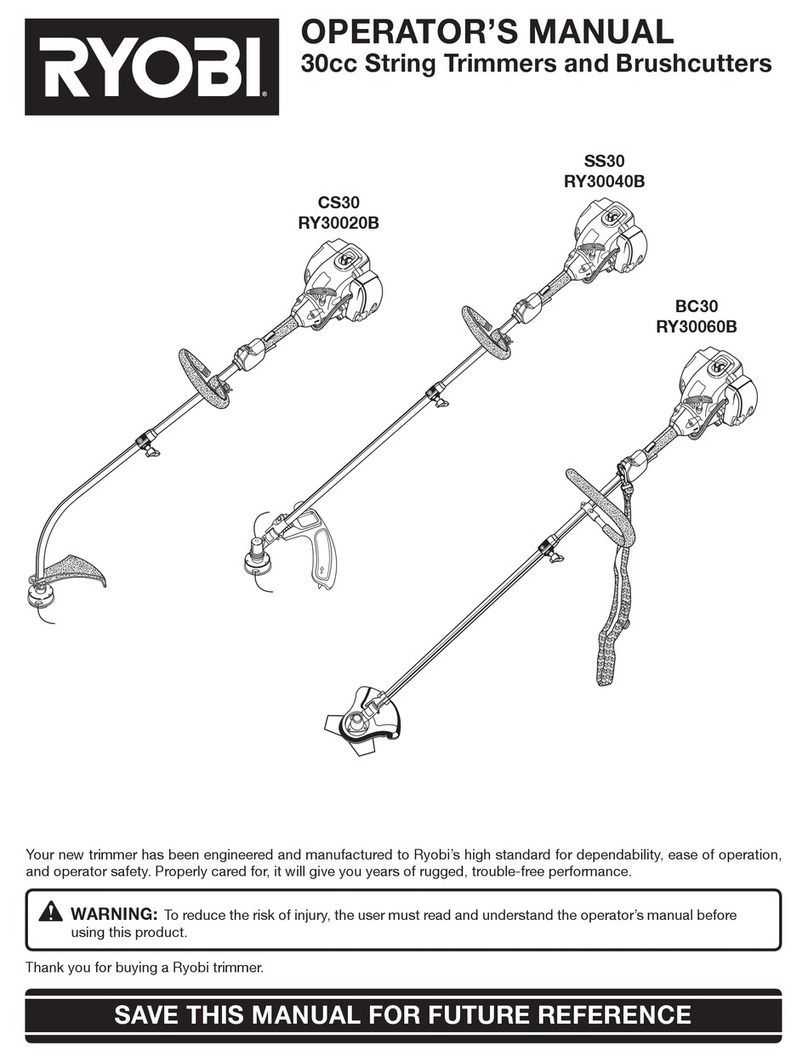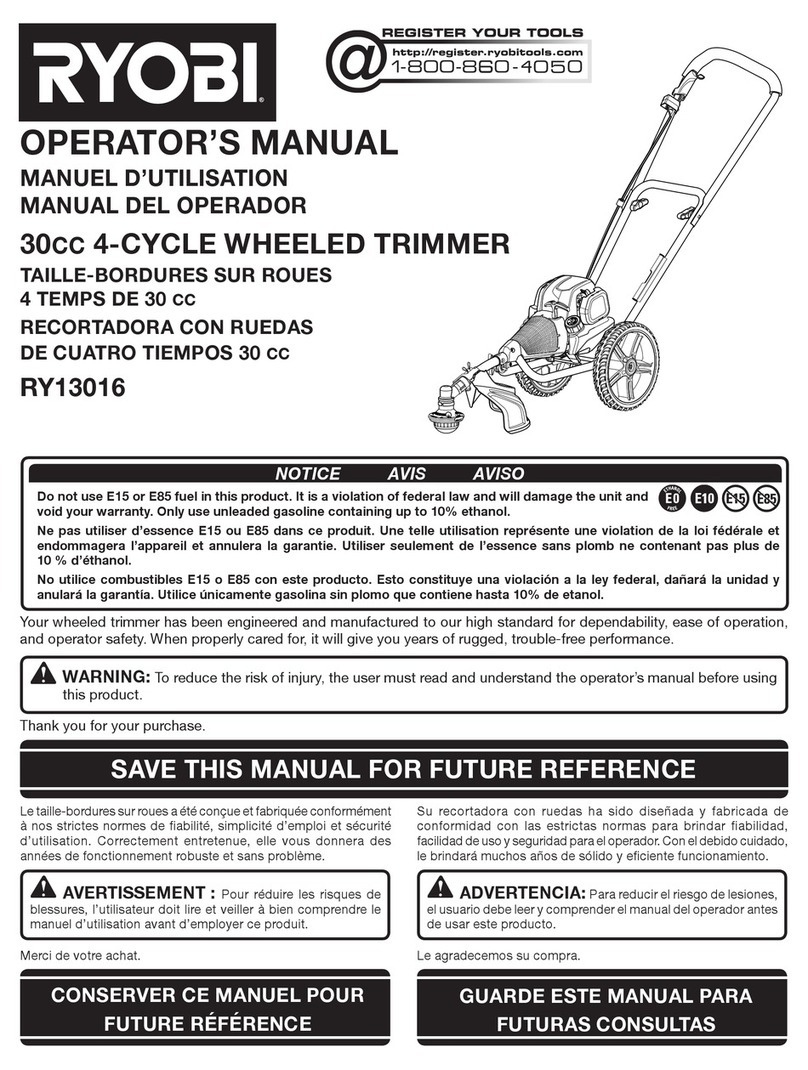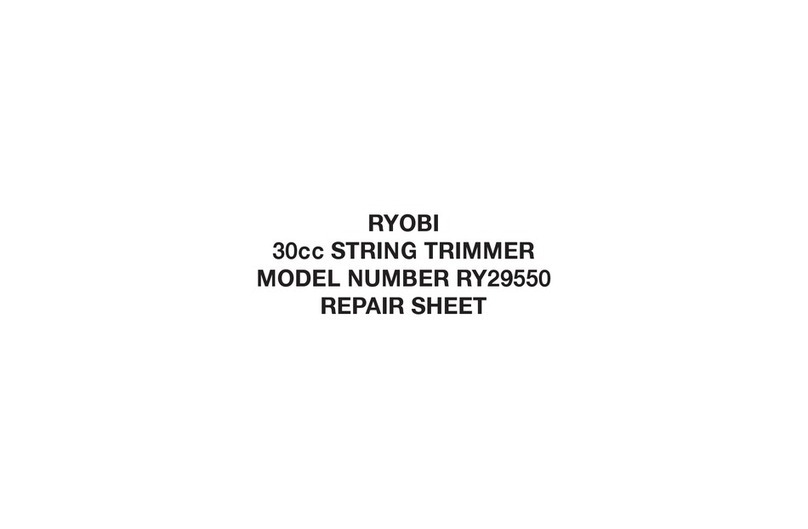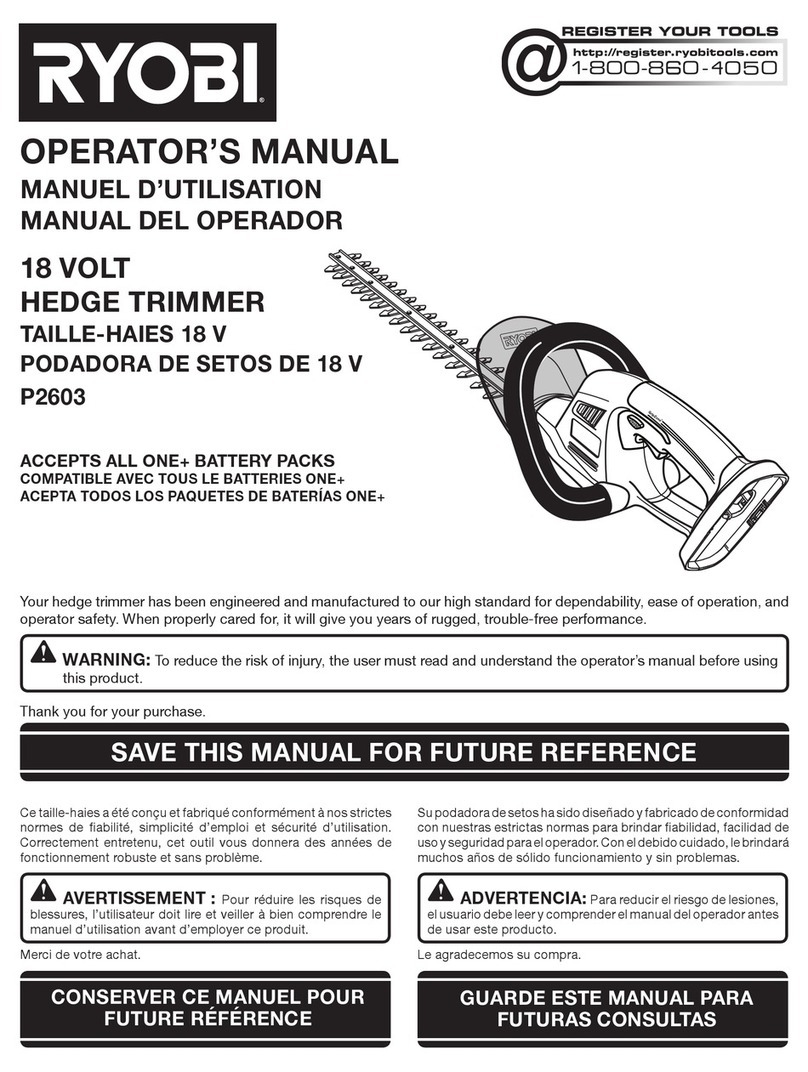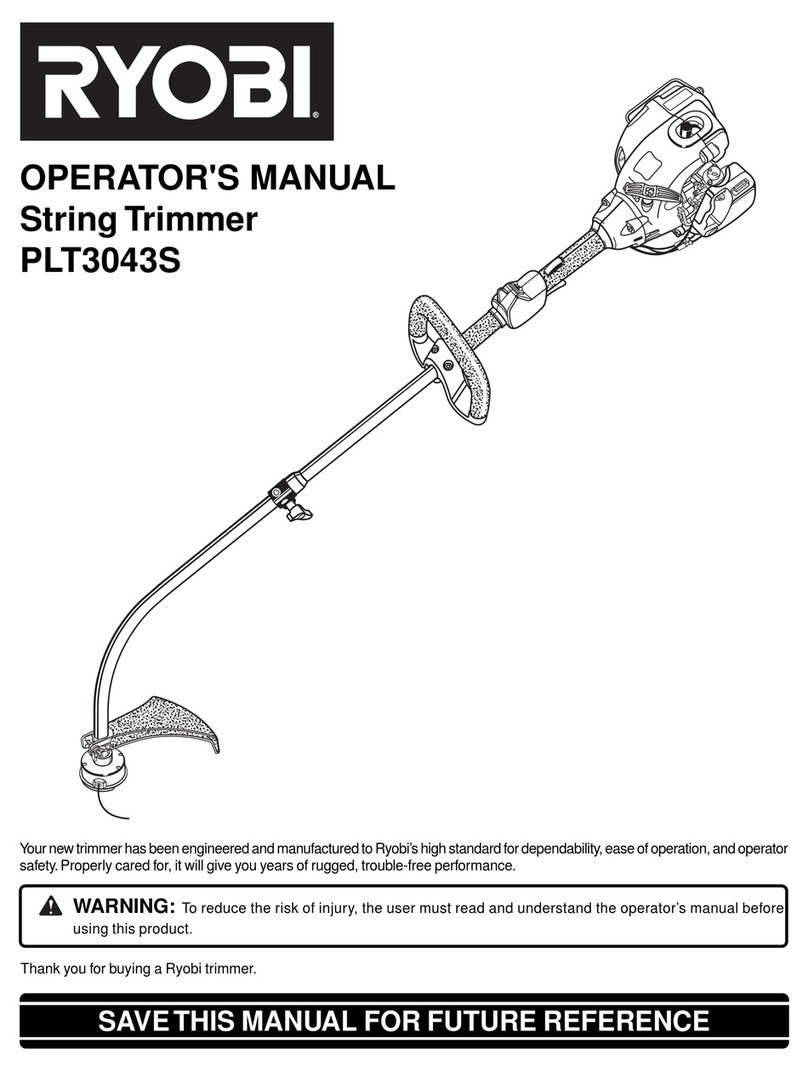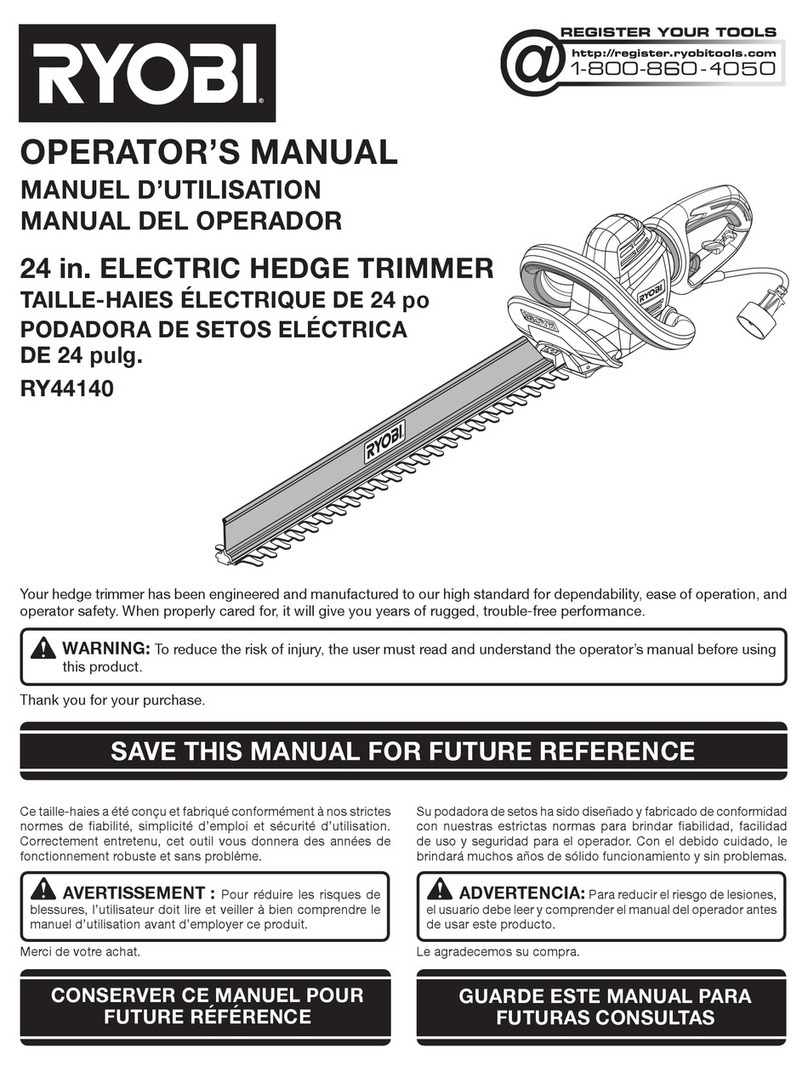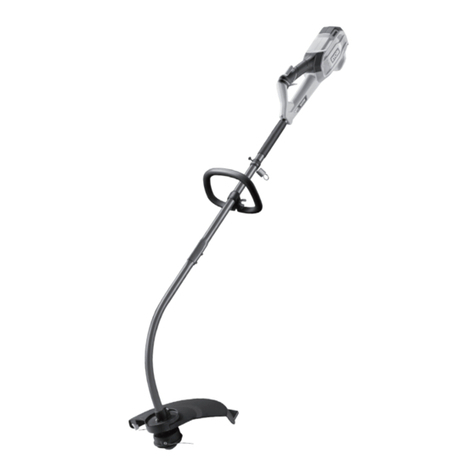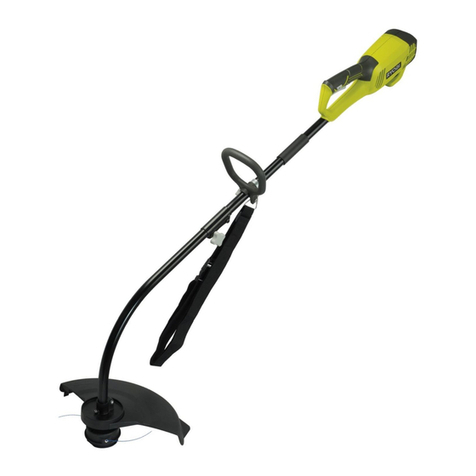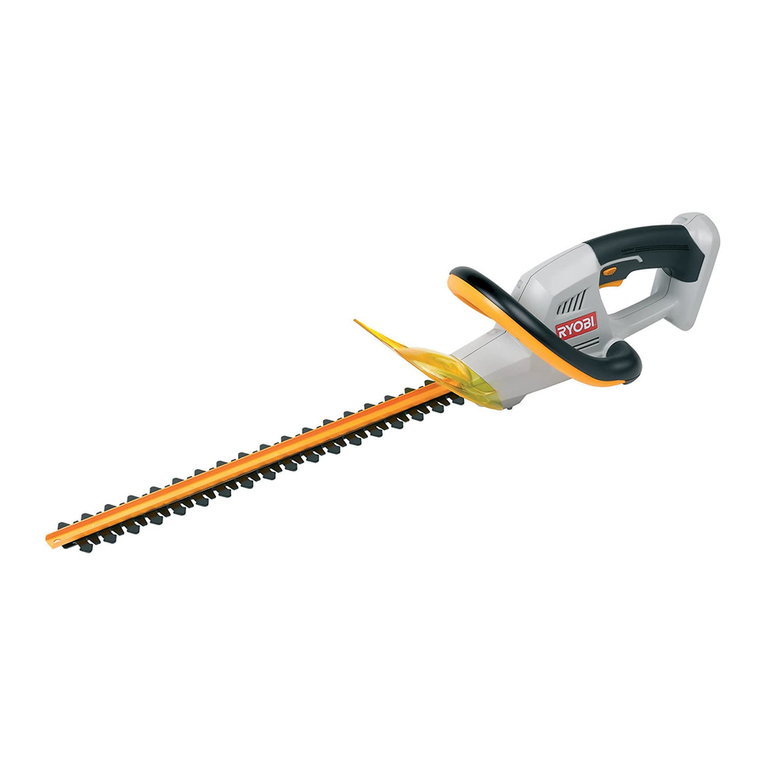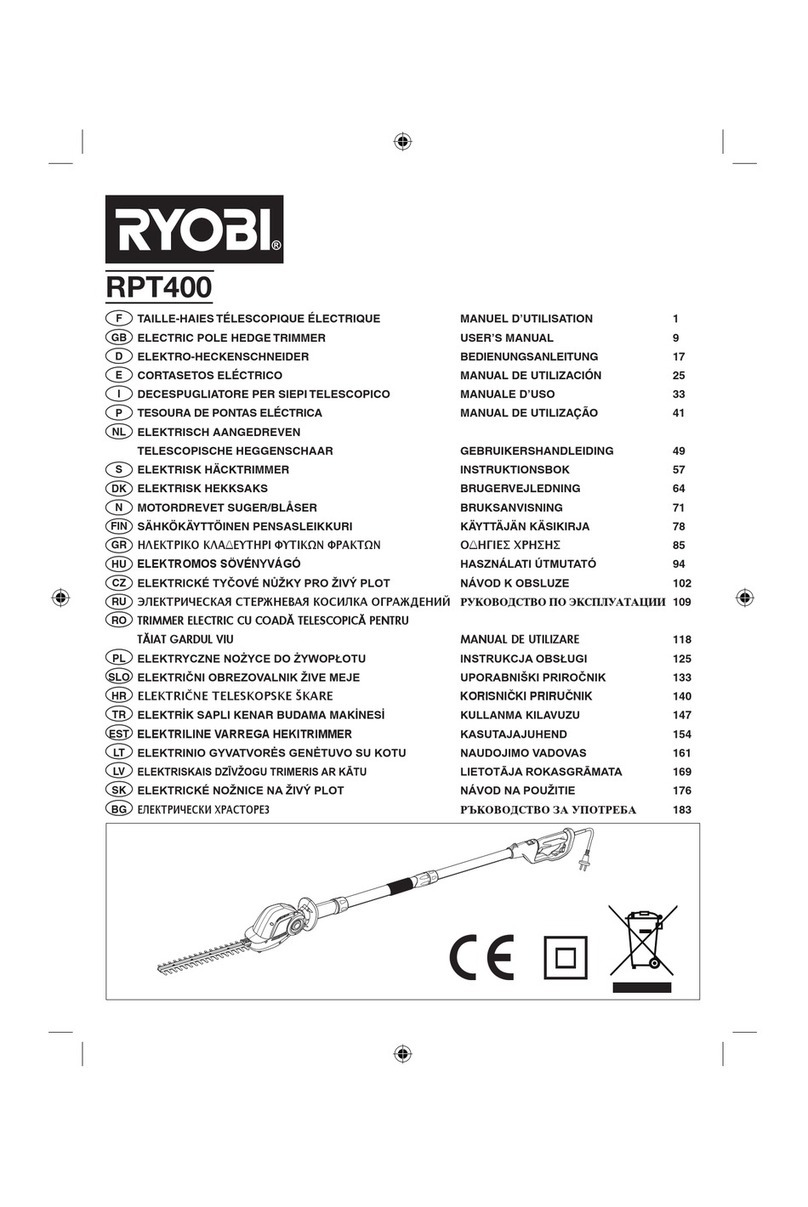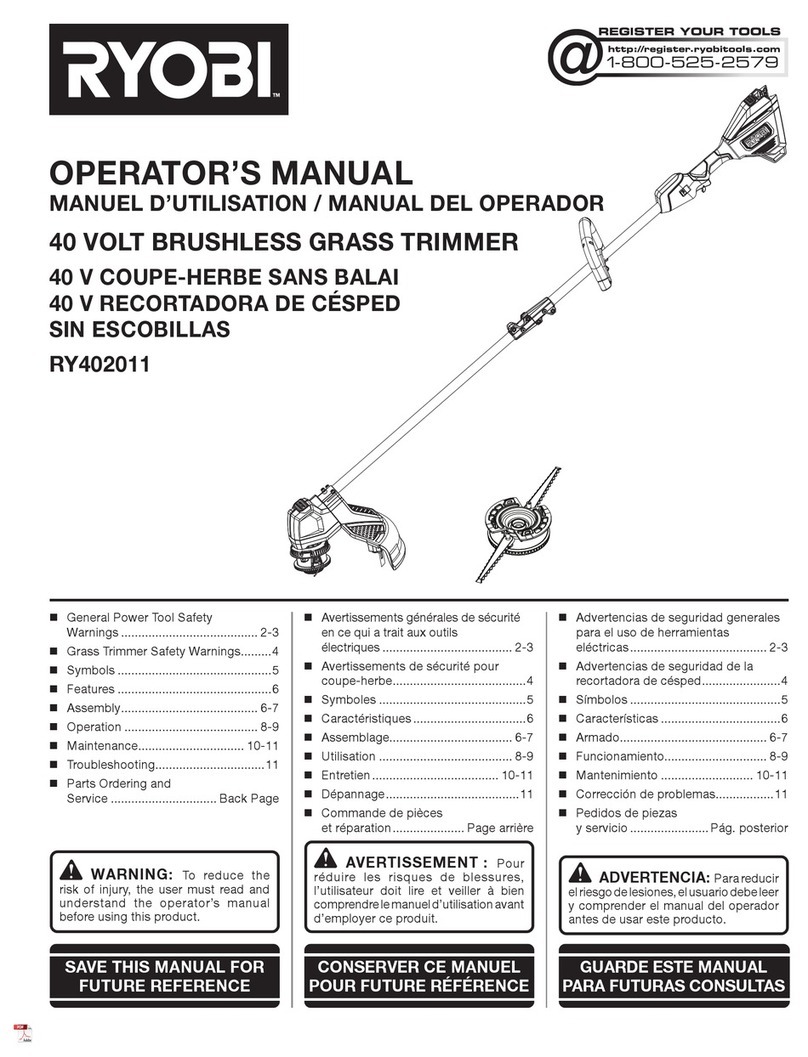
2
operation. If damaged, have the power tool repaired
before use. Many accidents are caused by poorly
maintained power tools.
■Keep cutting tools sharp and clean. Properly
maintained cutting tools with sharp cutting edges are
less likely to bind and are easier to control.
■Use the power tool, accessories and tool bits etc.
in accordance with these instructions, taking into
account the working conditions and the work to
be performed. Use of the power tool for operations
different from those intended could result in a
hazardous situation.
BATTERY TOOL USE AND CARE
■Recharge only with the charger specified by the
manufacturer. A charger that is suitable for one type
of battery pack may create a risk of fire when used with
another battery pack.
■Use power tools only with specifically designated
battery packs. Use of any other battery packs may
create a risk of injury and fire
■When battery pack is not in use, keep it away from
other metal objects, like paper clips, coins, keys,
nails, screws or other small metal objects, that can
make a connection from one terminal to another.
Shorting the battery terminals together may cause
burns or a fire.
■Under abusive conditions, liquid may be ejected
from the battery; avoid contact. If contact
accidentally occurs, flush with water. If liquid
contacts eyes, additionally seek medical help.
Liquid ejected from the battery may cause irritation or
burns.
SERVICE
■Have your power tool serviced by a qualified repair
person using only identical replacement parts. This
will ensure that safety of the power tool is maintained.
HEDGE TRIMMER SAFETY WARNINGS
■Keep all parts of the body away from the cutter
blade. Do not remove cut material or hold material
to be cut when blades are moving. Make sure the
switch is off when clearing jammed materials.
A moment of inattention while operating the hedge
trimmer may result in serious personal injury.
■Carry the hedge trimmer by the handle with cutter
blade stopped. When transporting or storing the
hedge trimmer always fit the cutting device cover.
Proper handling of the hedge trimmer will reduce
possible personal injury from the cutter blades.
■Hold the power tool by insulated gripping surface
only, because the cutter blade may contact hidden
wiring. Cutter Blades contacting a “live” wire may make
exposed metal parts of the power tool “live” and could
give the operator an electric shock.
ADDITIONAL SAFETY RULES
■Clear the work area before each use. Remove all
objects such as cords, lights, wire, or string which can
be thrown or become entangled in the cutting means.
■Check the hedge for foreign objects, such as wire
fences.
■Never use the product near posts, fences, buildings, or
other immovable objects.
■Beware of thrown objects; keep all bystanders, children,
and pets at least 15 m away from work area.
■Do not operate in poor lighting. The operator requires a
clear view of the work area to identify potential hazards.
■Inspect the product before each use. Check for loose
fasteners, etc. Make sure all guards and handles are
properly and securely attached. Replace any damaged
parts before use. Check for battery pack leaks.
■Do not modify the product in any way.
■Do not allow children or untrained individuals to use the
product.
■Wear full eye and hearing protection while operating the
product. If working in an area where there is a risk of
falling objects, head protection must be worn.
■Secure long hair so it is above shoulder level to prevent
entanglement in moving parts.
■Do not use the product when you are tired, ill, or under
the influence of alcohol, drugs, or medication.
■Keep firm footing and balance. Do not overreach.
Overreaching can result in loss of balance or exposure
to hot surfaces.
■Before starting the product, make sure the cutting
blades will not come in contact with anything.
■While operating the product, always hold it firmly with
both hands by the two handles and ensure that the
operating position is safe and secure. The manufacturer
does not recommend the use of steps or ladders. If
higher trimming is required, use an extended-reach
tool.
■Blades are sharp. When handling the blade assembly,
wear non-slip, heavy-duty, protective gloves. Do not
place your hand or fingers between the blades or
in any position where they could get pinched or cut.
Never touch the blade or service the product unless the
battery pack is removed.
■Switch off and remove the battery pack off before:
●adjusting the working position of the cutting device
●cleaning or clearing a blockage
●leaving the product unattended
●checking, maintaining, or working on the product
■Do not force the hedge trimmer through heavy
shrubbery. This can cause the blades to bind and slow
down. If the blades slow down, reduce the pace.
■Do not attempt to cut stems or twigs that are larger than
18 mm thick or those obviously too large to feed into the
cutting blade. Use a non-powered hand saw or pruning
saw to trim large stems.
■Use of hearing protection reduces the ability to hear
warnings (shouts or alarms). The operator must pay
extra attention to what is going on in the working area.
